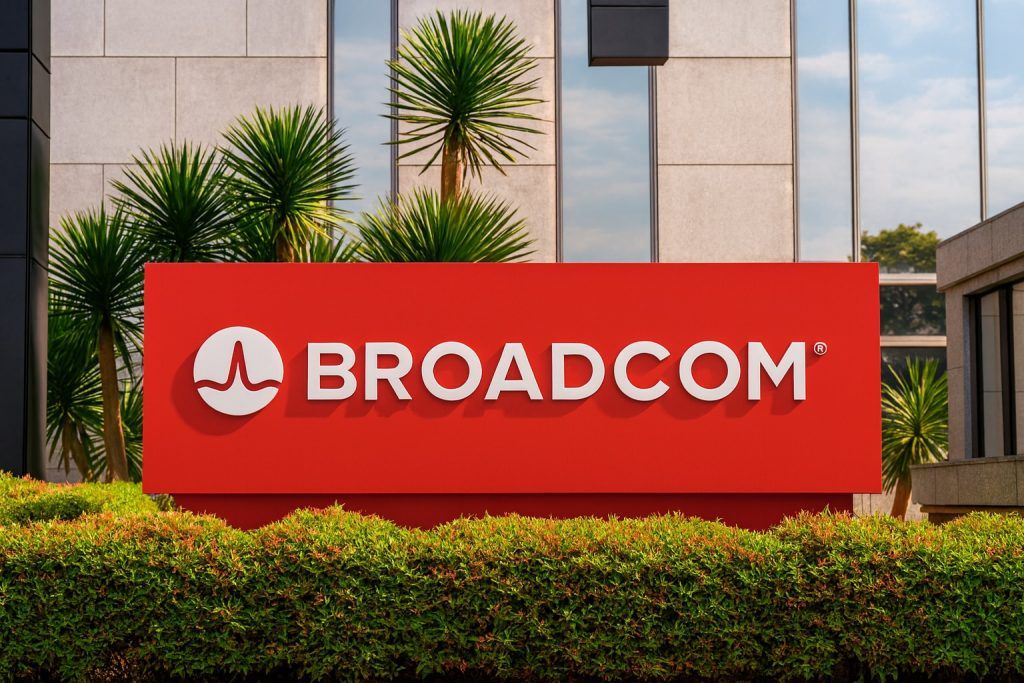What to Know Before Markets Open on October 20, 2025
- Stock Near 52-Week High: Annaly Capital Management (NYSE: NLY) closed Friday at $20.80, up 1.41% on the day [1]. The stock is hovering near its 52-week high of ~$22.45 [2] after a steady rebound in recent months, boasting a +13% year-to-date share price gain (about +18% total return with dividends) [3].
- Hefty 13.5% Dividend Yield: The mortgage REIT pays a quarterly dividend of $0.70 per share (annualized $2.80), yielding approximately 13.5% at current prices [4]. Annaly hiked its payout from $0.65 earlier in 2025 [5] after a strong Q1 earnings beat, signaling management’s confidence. However, the dividend’s payout ratio exceeds 200% of recent GAAP earnings [6] [7], prompting debate over its long-term sustainability.
- Market & Sector Tailwinds: Investors in Annaly and other REITs are eyeing a more favorable interest rate backdrop. U.S. 10-year Treasury yields ~4.0% have pulled back from recent highs [8], and the Fed is widely expected to cut rates at its late-October meeting [9]. Lower rates benefit mortgage REITs by reducing funding costs – a 0.50% Fed rate cut could boost Annaly’s net interest income by ~5%, according to some estimates [10].
- Recent Developments: In early October, Annaly partnered with PennyMac (a top mortgage lender) to purchase a portfolio of mortgage servicing rights (MSRs), expanding Annaly’s servicing network while PennyMac continues subservicing the loans [11]. The company was also removed from the FTSE All-World Index in late September amid index rebalancing [12]. Management has downplayed the index exit’s impact [13], focusing instead on Annaly’s core strategy of optimizing its Agency MBS, MSR, and residential credit portfolio.
- Analyst Outlook: Wall Street’s consensus on NLY is neutral, with a mix of Buy and Hold ratings (6 Buys, 4 Holds, 1 Sell) and an average price target around $21 [14] – only modest upside from current levels. The company reports Q3 2025 earnings on Oct. 22; analysts forecast about $0.72 EPS on $493 million revenue [15], in line with last quarter’s $0.73 result which narrowly beat estimates [16]. While Annaly’s massive yield and improving fundamentals attract income investors, some analysts caution that the stock is fully valued after its recent rally [17].
Stock Price Performance & Momentum
Annaly Capital’s stock price has climbed steadily through 2025, supported by easing interest rate fears and its outsized dividend yield. Shares of Annaly Capital Management are trading near their highest levels of the past year after mounting a robust recovery. The stock closed at $20.80 on October 17th – approaching its 52-week peak of ~$22.45 – as investors bid up the mortgage REIT amid improving market sentiment [18] [19]. Annaly’s share price has risen about 13% year-to-date, outpacing many peers and roughly matching broader market gains, especially once its hefty dividend is factored in [20]. In fact, including dividends, NLY has delivered approximately an 18% total return over the past year [21], reflecting renewed investor confidence after a volatile 2022–2023 period for mortgage-focused REITs.
Recent trading action shows steady momentum. The stock notched a modest +1% gain in the past week [22] and has been relatively stable in recent months despite interest rate swings. NLY’s 50-day moving average of $21.09 sits slightly above the current price, and the 200-day average near $19.91 underscores the upward trend since early 2025 [23]. The company’s market capitalization is now about $13.3 billion [24]. Notably, Annaly’s beta of 1.25 indicates the stock tends to move somewhat more than the broader market, which is common for leveraged high-yield investments [25]. Investors have grown more comfortable with Annaly’s outlook as its recent results met expectations and book value stabilized. For Q2 2025, Annaly delivered a “solid, as-expected” quarter, even eking out minor outperformance in book value and core earnings versus projections [26]. This operational consistency has helped underpin the stock’s climb.
It’s worth remembering that mortgage REITs like Annaly can be sensitive to macro headlines. The stock did face pressure during spikes in Treasury yields and bouts of market turmoil. But as discussed below, shifts in Federal Reserve policy and easing bond yields have alleviated some of those pressures recently. With the Dow and S&P 500 at or near record highs into late October [27] [28], income-oriented names such as Annaly have joined the rally. Still, at roughly 1.2 times book value (based on analysts’ estimates), NLY’s valuation is a talking point – some analysts argue the stock is now “slightly to modestly overvalued” relative to fundamentals [29]. This suggests that while momentum is positive, further upside may hinge on continued execution and a favorable interest rate environment.
13% Dividend Yield – Reward and Risk
One of Annaly’s biggest attractions is its double-digit dividend yield, which remains among the highest in the REIT sector. The company currently pays a quarterly dividend of $0.70 per share, equivalent to $2.80 annually, and yielding roughly 13.5% at the current stock price [30]. This generous payout was recently reaffirmed when Annaly’s board declared a $0.70 common dividend for Q3 2025 (ex-dividend date September 30, to be paid October 31) [31] [32]. Dividend investors cheered this consistency – especially since Annaly boosted its dividend from $0.65 to $0.70 earlier in 2025 following a strong first quarter [33]. The hike, announced in June, signaled management’s confidence in Annaly’s earnings trajectory and cash flow, and it lifted the stock’s yield even higher. “This move…follows a robust first-quarter performance…and signals management’s confidence,” noted a Monexa analysis of the dividend increase [34].
However, such a high yield comes with caveats about sustainability. By conventional metrics, Annaly’s payout far exceeds its recent GAAP earnings. The firm’s trailing twelve-month earnings per share are substantially lower than the $2.80 annual dividend – in fact, the dividend payout ratio is over 277% of the past year’s earnings [35]. This implies Annaly paid out nearly three times what it earned in GAAP profit, a situation made possible by the REIT’s use of non-GAAP metrics (like core or distributable earnings) and taxable income rules. Mortgage REITs are required to distribute at least 90% of their taxable income to shareholders, and they often add back non-cash losses or rely on hedging gains to cover dividends. Annaly’s management has expressed confidence that the dividend is covered by its economic earnings. For instance, core earnings (a measure of operating profit excluding some mark-to-market items) have roughly matched the dividend recently – Q2 saw $0.73 EPS vs. $0.70 dividend [36], and analysts expect around $3.00 EPS for the full year 2025 [37], which would just cover the $2.80 payout. Indeed, analysts at the REIT Forum note that Annaly is “well positioned to maintain its $0.70 dividend, with only slight coverage concerns to monitor” [38]. They assign NLY a moderate risk rating, reflecting some caution but not alarm over the payout.
That said, the high payout ratio underscores that Annaly’s dividend is not without risk. The company’s TTM EPS of $1.13 vs. TTM dividends of $2.65 (as of mid-2025) highlights a reliance on portfolio gains and non-core income to bridge the gap [39]. In 2023, Annaly actually reported a GAAP loss (due to unrealized losses on assets as rates rose) but returned to profitability in 2024 as it adjusted its portfolio [40]. The dramatic swing – from a -$1.64 billion net loss in 2023 to +$1.0 billion net income in 2024 – demonstrates how volatile mREIT earnings can be [41]. The dividend was trimmed during tougher times and could be adjusted again if needed. Longtime shareholders will recall that Annaly has a history of modulating its dividend in response to interest rate cycles and portfolio performance. The recent raise to $0.70 suggests optimism about near-term earnings power (a view bolstered by the anticipated Fed rate cuts), but management will likely remain pragmatic. Investors are watching “distributable earnings” and cash flow closely. For now, the combination of an outsized 13% yield and a stock near highs indicates the market is relatively comfortable that Annaly can sustain its payout in the short term – a notable turnaround from a year ago when rising rates cast doubt on many REIT dividends.
Fed Signals, Interest Rates & REIT Sector Context
Annaly’s resurgence comes as the macro backdrop for real estate investment trusts – especially mortgage REITs (mREITs) – has started to improve. The past couple of years were challenging for mREITs, which borrow heavily to invest in mortgages and MBS (mortgage-backed securities). The Fed’s rapid rate hikes in 2022–2023 drove funding costs higher and dented the market value of fixed-rate mortgage assets, forcing many mREITs to defend their book values. In 2025, however, we’re seeing a potential inflection point in monetary policy. As of mid-October, investors widely expect the Federal Reserve to begin cutting interest rates – possibly as soon as the Oct. 28–29 meeting [42]. Major Wall Street banks are forecasting at least two 0.25% rate cuts by year-end 2025 [43] given signs of cooling inflation and a fragile economic backdrop. Indeed, the Fed already delivered a quarter-point cut in September and is poised for another in late October, according to futures markets [44] [45].
For Annaly and its peers, a Fed “dovish pivot” is generally good news. mREITs profit from the spread between the yield on their mortgage assets and their cost of borrowing. When interest rates fall, several positives occur: borrowing costs decline (narrowing the gap between short-term rates and the income from longer-term MBS), and the market value of existing MBS can rise (since older mortgages with higher coupons become more valuable). Annaly’s management has indicated that a shifting rate environment is a key tailwind – one analysis noted that a 50 basis point rate cut could boost Annaly’s net interest income by ~5% [46]. We already saw a glimpse of this in Q2 2025: as long-term Treasury yields pulled back in late June, Annaly recorded a small net valuation gain on its portfolio and grew book value slightly [47] [48]. The company also reduced its hedge positions a bit (hedging coverage down to 95% from 102%), reflecting a view that extreme defense may not be as necessary if rate volatility abates [49] [50].
Broader market indicators underscore the improving backdrop. Treasury yields have eased off peak levels – the 10-year yield, which had spiked well above 4% earlier, is around 4.0% in mid-October [51]. Meanwhile, inflation, while still above target, has shown signs of cooling, and oil prices have come down from recent highs [52]. These trends reduce the pressure on the Fed to keep tightening. Equity markets have responded by rallying to new highs, with the S&P 500 and Dow near all-time records [53]. Interest-sensitive sectors like real estate have stabilized. The Nareit Mortgage REIT index (which tracks mREIT performance) has climbed in the second half of 2025, recovering from a spring slump (though it remains off pre-2022 levels). Importantly for Annaly, Agency mortgage-backed securities spreads – the extra yield over Treasurys that MBS investors demand – remain attractive. Annaly’s CEO David Finkelstein has previously pointed out that Agency MBS yield spreads are wide, offering the potential for outsized returns once volatility dies down [54]. If the Fed is indeed transitioning to a rate-cutting cycle, it could mark a period of spread tightening (boosting MBS prices) and lower hedging costs, a “sweet spot” for well-capitalized mREITs.
It’s not all clear skies: interest rate volatility is still a risk. Mortgage REITs tend to perform best when rates are relatively stable or gently falling. Sudden spikes in yields – like those seen during inflation scares – can hurt book values and force leverage reductions. Annaly navigated such a spike in late 2023 and early 2024 by repositioning its portfolio and raising capital. The company even issued $400 million in common equity (an accretive raise) to bolster its balance sheet [55], which has helped support its growth and dividend capacity. Today, Annaly runs a diversified portfolio across Agency MBS, residential credit loans, and MSRs (servicing rights). This diversification, plus active hedging, aims to cushion against rate swings. Still, investors should monitor the 10-year yield and Fed communications closely; an unexpected reversal toward tightening or any surge in inflation could put mREITs back on the defensive. As Simply Wall St noted, “persistent market volatility or a reversal in mortgage rates could quickly challenge the current optimism” around Annaly’s outlook [56]. For now, though, the sector context is turning more favorable, with easier monetary policy on the horizon and mREIT valuations still reasonable. Annaly’s stock, for example, trades around 20.5× trailing earnings [57] (reflecting depressed GAAP earnings), but on a forward core earnings basis the multiple is closer to 7× – suggesting the market expects an earnings rebound as conditions normalize.
New Moves: MSR Deal and Index Removal
Annaly has also been active on the strategic front, taking steps to expand its business and streamline operations. A notable recent development was the company’s strategic partnership with PennyMac Financial Services, announced in late September 2025. Under the deal, Annaly agreed to purchase a portfolio of mortgage servicing rights (MSRs) from PennyMac, one of the country’s top mortgage originators and servicers, while PennyMac will subservice (i.e. continue to handle servicing on) the loans in that MSR portfolio [58] [59]. This arrangement effectively boosts Annaly’s exposure to the mortgage servicing business without requiring it to build out large-scale servicing operations internally – PennyMac provides the servicing expertise and customer interface, and Annaly provides capital. Annaly’s CEO David Finkelstein hailed the partnership as an enhancement to its “best-in-class network of servicing and recapture relationships” and noted that since adding MSRs to its balance sheet in 2020, Annaly has grown into a top-10 servicer of Agency mortgages with ~680,000 loans and $219 billion in unpaid principal balance of mortgages serviced [60] [61]. The MSR portfolio Annaly is acquiring from PennyMac is comprised of high-quality loans (avg. FICO 757, avg. note rate 3.24%) [62]. This suggests Annaly is doubling down on MSRs as a complementary asset: MSRs can perform well when rates rise (since they increase in value as mortgage prepayments slow), balancing the interest-rate risk of the MBS portfolio. In essence, the PennyMac deal broadens Annaly’s servicing footprint and should add a steady fee income stream, while PennyMac gets to rotate capital and still earn subservicing fees [63] [64]. Analysts viewed it as a win-win: “This collaboration is poised to broaden Annaly’s servicing network… supports PennyMac’s expansion in subservicing,” noted Simply Wall St, which also said the MSR deal could diversify Annaly’s portfolio and bolster its long-term outlook [65] [66].
Around the same time, Annaly made news for a less flattering reason: its removal from the FTSE All-World Index. FTSE Russell undertook its periodic index rebalancing in September, and Annaly was among the names dropped from the global index (likely due to its market cap, sector shifts, or other criteria) [67]. This sparked some short-term selling by passive funds that track the index. However, the development is largely seen as a technicality; it doesn’t reflect company fundamentals. Annaly’s management and many investors seem unconcerned about the index removal’s long-term impact [68]. In fact, some noted that the deletion coincided with Annaly’s $0.70 dividend declaration for Q3 – a reminder of the stock’s appeal to income-focused investors regardless of index membership [69]. The stock did not suffer any sustained drop on the news, and any forced selling appeared to be absorbed quickly. Simply Wall St commented that index changes like this “are unlikely to materially affect Annaly’s biggest near-term catalyst” – which remains the health of the mortgage market and Annaly’s strategy execution – nor do they alter the key risk of interest rate volatility [70]. In other words, falling out of an index hasn’t changed Annaly’s investment narrative or institutional appeal in a significant way. Over half the stock is owned by institutions (about 51% as of the latest filings) [71] [72], and there’s no indication that large holders are wavering due to the index issue.
Another recent update: Annaly announced it will release Q3 2025 earnings on October 22nd, with a conference call on Oct. 23 [73]. This comes on the heels of Q2 2025 results (reported in late July), where Annaly modestly beat expectations. Q2’s earnings of $0.73 per share edged the $0.72 consensus [74], while revenue of $273 million handily surpassed forecasts of ~$237 million [75] – partly thanks to strong interest income and perhaps some portfolio rebalancing gains. Annaly’s return on equity was ~15.5% in Q2 [76], reflecting robust profitability relative to its book value, and net profit margin was ~13.8% [77]. These are solid figures for an mREIT and help explain why the dividend coverage looked comfortable for that quarter. Investors will be watching the Q3 report for any updates on book value per share (a key metric for REITs), net interest margin, and the outlook in light of the Fed’s expected moves. Given the timing, management’s commentary on how they are positioning into a potential rate-cut cycle will be of high interest.
Wall Street Sentiment and Forecasts
Analysts covering Annaly are cautiously optimistic but generally do not see huge upside beyond current levels – essentially reflecting that the stock’s big rebound has already occurred. According to MarketBeat data, Annaly carries a consensus rating of “Hold” at the moment [78]. Of the major research firms tracking NLY, 6 analysts rate it a Buy, 4 say Hold, and 1 (if any) has it at Sell [79]. The average 12-month price target is about $21.13 per share [80], roughly where the stock trades now. Many analysts apparently feel Annaly is fairly valued after its run-up, with the double-digit yield accounting for much of the total return expectation. For example, UBS recently raised its price target to $21 (Neutral) [81], and Keefe, Bruyette & Woods (KBW) upped their target to $21.50 (Outperform) back in July [82]. JonesTrading reiterated a Buy with a $21 target over the summer [83]. The most bullish call in recent weeks came from Piper Sandler, which set a $22.50 target and an Overweight rating on October 8 [84], suggesting some upside if Annaly executes well and sector conditions improve. On the flip side, Zacks Investment Research downgraded NLY to Hold from Strong Buy in August [85], likely after the stock’s valuation multiple expanded. In sum, there’s a split between income-oriented bulls who see value in the yield and slight price appreciation, and more valuation-conscious analysts who think the easy gains have been made. This dynamic results in a middling consensus view – not bearish, but tempered.
What about the outlook for earnings and growth? As mentioned, analysts expect Annaly to post around $3.00 in earnings per share for full-year 2025 (and a similar ~$3.00 in 2026) [86]. If achieved, that level of earnings would fully cover the dividend and represent stability in the business. It’s worth noting that Wall Street’s definition of “earnings” for mREITs often aligns closer to core earnings (which exclude some unrealized gains/losses) or an assumed normalized environment. Thus, the $3 EPS forecast implies confidence that Annaly’s core profitability (net interest income minus hedging costs, etc.) will remain solid through any Fed easing cycle. In the immediate term, Q3 2025 EPS is projected at about $0.72 [87], which would be flat sequentially and down slightly from the $0.89 Annaly earned in Q3 of last year (a quarter that benefited from unusually large hedging gains). The revenue forecast for Q3 is ~$493.5 million [88], significantly higher than Q2’s $273 million – this jump could be due to expected gains or a reclassification, so investors will look for clarification on the earnings call.
From a book value perspective, many analysts will be looking at Annaly’s economic return (change in book value plus dividend) for 2025. So far, the numbers are encouraging: book value has been relatively stable, and with dividends, Annaly delivered a positive economic return in the first half. Scott Kennedy of Seeking Alpha’s REIT Forum, a noted mREIT analyst, currently rates Annaly around a hold due to valuation. After Q2, he remarked that while the company is performing well operationally – “minor outperformance” on book value and earnings – the stock appeared slightly overvalued, leading him to a near-term Sell on valuation grounds alone [89]. His view illustrates a key point: NLY’s price-to-book and price-to-earnings (GAAP) ratios have expanded as the stock ran up. Annaly’s P/E is ~20 (using trailing GAAP EPS) vs. the mREIT industry average around 12–13 [90], and even on forward earnings it’s not a deep bargain. Bulls counter that traditional valuation metrics are skewed right now by one-time charges and that Annaly’s “fair value” should be around $21–$22. For instance, a community of Simply Wall St contributors pegs Annaly’s intrinsic value near $21.20–$21.50 per share, effectively right at the current market price [91] [92]. That suggests the stock is reasonably priced (“3% undervalued” in one popular model) [93], not a screaming buy but also not clearly overvalued when considering its $0.70 quarterly cash generation.
Looking ahead, the short-term catalysts for Annaly will include the Fed’s next moves (a confirmed rate cut could further boost sentiment for high yielders), the Q3 earnings report, and any commentary on dividend policy going into 2026. In the medium term, the trajectory of interest rates and the housing finance market will be pivotal. If the economy avoids severe recession and rates gently decline, Annaly could see its book value appreciate as MBS prices rise, and its earnings could stabilize or grow with cheaper leverage – a scenario that bodes well for maintaining the dividend and perhaps gradually raising it or buying back shares (Annaly has had a $1.5 billion share repurchase program authorized, indicating that if management finds the stock undervalued they can retire shares) [94]. Conversely, if inflation reaccelerates or the Fed’s cuts are derailed – or if the economy enters a sharp downturn hitting borrowers – mREITs could face renewed stress.
At present, top analysts are not projecting big price moves for NLY, which often trades in line with its book value plus or minus a small premium/discount. The consensus near $21 implies the stock will mostly tread water, delivering most of its return via the dividend. However, that dividend itself (north of 13%) is a significant draw. As a recent investing article quipped, “For investors willing to take the risk, Annaly’s high yield could generate strong total returns”, especially if bought at favorable prices [95] [96]. The risk, of course, is that high yields can signal high risk – any stumble in earnings or upward jolt in rates might force a dividend cut or send the stock lower. So far, Annaly’s proactive moves (portfolio shifts, capital raises, MSR acquisitions) and the changing rate climate have tilted the odds in favor of stability.
In summary, Annaly Capital Management enters late 2025 on a high note: the stock is near its yearly peak, the dividend is fat and recently increased, and macro winds are shifting in its favor after a challenging rate cycle. The company’s positioning as a leading mortgage REIT with diversified strategies (Agency MBS, credit, servicing) gives it multiple levers to pull. Investors should watch upcoming Fed decisions and the Q3 results for confirmation that Annaly can continue to earn its payout and perhaps even grow into 2026. With a yield in the mid-teens, even holding steady could mean substantial cash returns. As it stands, the market appears to believe that Annaly’s 13% yield is real (and reachable) – a compelling proposition in a world of still-low (if rising) fixed income yields. The next few weeks will bring more clarity on just how well NLY can navigate the new chapter of falling rates, but many on Wall Street are content collecting the dividends while they wait for that picture to unfold. Investors in this high-yield REIT have plenty to chew on, but if Annaly delivers as expected, it could remain a cornerstone income play in the mortgage finance space.
Sources: Annaly Capital press releases and financial data [97] [98] [99]; MarketBeat/SEC filings [100] [101]; Simply Wall St and analyst commentary [102] [103]; Reuters market context [104] [105]; Monexa and Seeking Alpha analyses [106] [107]; PennyMac partnership details [108] [109].
References
1. tickertech.com, 2. tickertech.com, 3. simplywall.st, 4. www.marketbeat.com, 5. www.monexa.ai, 6. www.monexa.ai, 7. www.marketbeat.com, 8. ts2.tech, 9. ts2.tech, 10. www.monexa.ai, 11. www.sahmcapital.com, 12. www.webull.com, 13. www.sahmcapital.com, 14. www.marketbeat.com, 15. www.marketbeat.com, 16. www.marketbeat.com, 17. seekingalpha.com, 18. tickertech.com, 19. tickertech.com, 20. simplywall.st, 21. simplywall.st, 22. simplywall.st, 23. www.marketbeat.com, 24. www.marketbeat.com, 25. www.marketbeat.com, 26. seekingalpha.com, 27. ts2.tech, 28. ts2.tech, 29. seekingalpha.com, 30. www.marketbeat.com, 31. www.marketbeat.com, 32. www.marketbeat.com, 33. www.monexa.ai, 34. www.monexa.ai, 35. www.marketbeat.com, 36. www.marketbeat.com, 37. www.marketbeat.com, 38. seekingalpha.com, 39. www.monexa.ai, 40. www.monexa.ai, 41. www.monexa.ai, 42. ts2.tech, 43. www.monexa.ai, 44. ts2.tech, 45. ts2.tech, 46. www.monexa.ai, 47. seekingalpha.com, 48. seekingalpha.com, 49. seekingalpha.com, 50. seekingalpha.com, 51. ts2.tech, 52. ts2.tech, 53. ts2.tech, 54. www.webull.com, 55. simplywall.st, 56. simplywall.st, 57. www.marketbeat.com, 58. tickertech.com, 59. tickertech.com, 60. tickertech.com, 61. tickertech.com, 62. tickertech.com, 63. www.sahmcapital.com, 64. www.sahmcapital.com, 65. www.sahmcapital.com, 66. www.sahmcapital.com, 67. www.webull.com, 68. www.sahmcapital.com, 69. www.webull.com, 70. www.webull.com, 71. www.marketbeat.com, 72. www.marketbeat.com, 73. tickertech.com, 74. www.marketbeat.com, 75. www.marketbeat.com, 76. www.marketbeat.com, 77. www.marketbeat.com, 78. www.marketbeat.com, 79. www.marketbeat.com, 80. www.marketbeat.com, 81. www.marketbeat.com, 82. www.marketbeat.com, 83. www.marketbeat.com, 84. www.marketbeat.com, 85. www.marketbeat.com, 86. www.marketbeat.com, 87. www.marketbeat.com, 88. www.marketbeat.com, 89. seekingalpha.com, 90. simplywall.st, 91. www.webull.com, 92. simplywall.st, 93. simplywall.st, 94. www.monexa.ai, 95. www.investing.com, 96. www.investing.com, 97. tickertech.com, 98. tickertech.com, 99. tickertech.com, 100. www.marketbeat.com, 101. www.marketbeat.com, 102. simplywall.st, 103. seekingalpha.com, 104. ts2.tech, 105. ts2.tech, 106. www.monexa.ai, 107. seekingalpha.com, 108. tickertech.com, 109. www.sahmcapital.com








